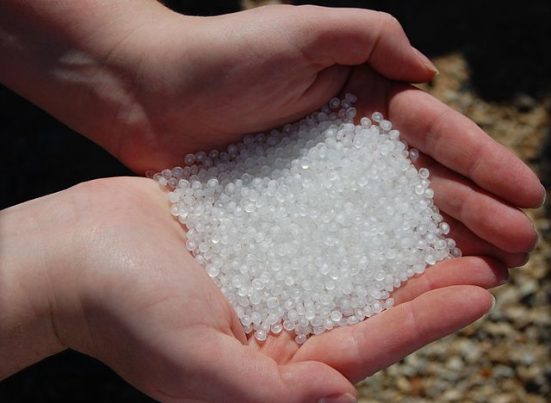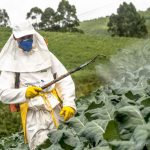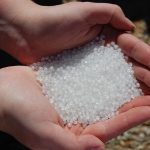
SHOCK: 50% of freshwater insects are contaminated with microplastics
Saturday, November 24, 2018 by Isabelle Z.
http://www.realsciencenews.com/2018-11-24-shock-50-of-freshwater-insects-contaminated-with-microplastics.html

We tend to hear quite a bit about fish suffering from plastic contamination, with images of whales washing up on beaches with stomachs full of plastic bottles becoming an all-too-common sight these days. However, even animals that aren’t big enough to ingest water bottles are still suffering from plastic pollution. Recent research highlighted the shocking effects that microplastics are having on freshwater insects.
In what was the first study in the U.K. of microplastics in river insects, researchers led by the School of Biosciences at Cardiff University made an of setting discovery. Microplastic fragments, which are tiny pieces of plastic debris that measure 5 mm or less, were discovered to have been ingested by one out of every two insects at every site the scientists sampled.
The researchers looked at insects such as the mayfly and caddis larvae, and they found that they contain plastic materials regardless of their feeding method. They studied insects both downstream and upstream from sewage treatment plants on the Wye River, Usk River, and Taff River. They discovered that although there were higher concentrations of microplastics in places where wastewater made a bigger contribution to river flow, the problem existed in upstream as well as downstream sewage outfalls, which indicates microplastics are making their way into rivers from widespread sources.
Ph.D. student Fred Windsor pointed out that up to 12 million tons of plastics are believed to enter oceans around the world each year, and four million tons pass along rivers. He said that it’s no wonder insects are ingesting it because there can be as many as half a million plastic fragments in every square meter of river bed.
The ramifications are quite serious, with the potential for problems arising from direct toxicity or pollutants that the microplastics are transporting. There’s also the fact that animals that prey on the insects could also be affected by the plastics inside of them. The scientists emphasized the need for better ways of understanding and managing the risks.
Microplastics are also circulating in the air thanks to flying insects
A similar study that was carried out by researchers from the University of Reading found that microplastics can escape from polluted water with the help of flying insects. After feeding mosquito larvae, who live in water, microplastics, they discovered the particles stayed inside of the mosquitoes as they became flying adults. The researchers said that they consider it “highly likely” that other flying insects that start their lives as water larvae also eat microplastics and retain them. These insects then pass them on to the bats, spiders and birds that eat them.
The leader of the research, Professor Amanda Callaghan, said: “It is a shocking reality that plastic is contaminating almost every corner of the environment and its ecosystems. Much recent attention has been given to the plastics polluting our oceans, but this research reveals it is also in our skies.”
One big problem is that larvae are filter feeders who are unable to tell a bit of food apart from a bit of plastic, and the algae they eat is roughly the same size as these dangerous microplastics.
According to NOAA, microplastics come from several sources. Larger plastic debris that has degraded into smaller pieces over time is a big source, and they also come from the microbeads that are added to health and beauty products like toothpastes and body washes. With plastic production expected to rise by 40 percent within the next decade, the time to take action to stem this problem is now.
Sources for this article include:
Tagged Under: Tags: badpollution, clean water, Ecology, ecosystems, environ, environment, filter feeders, insects, microplastics, mosquitoes, ocean health, plastic pollution, plastics, real science





